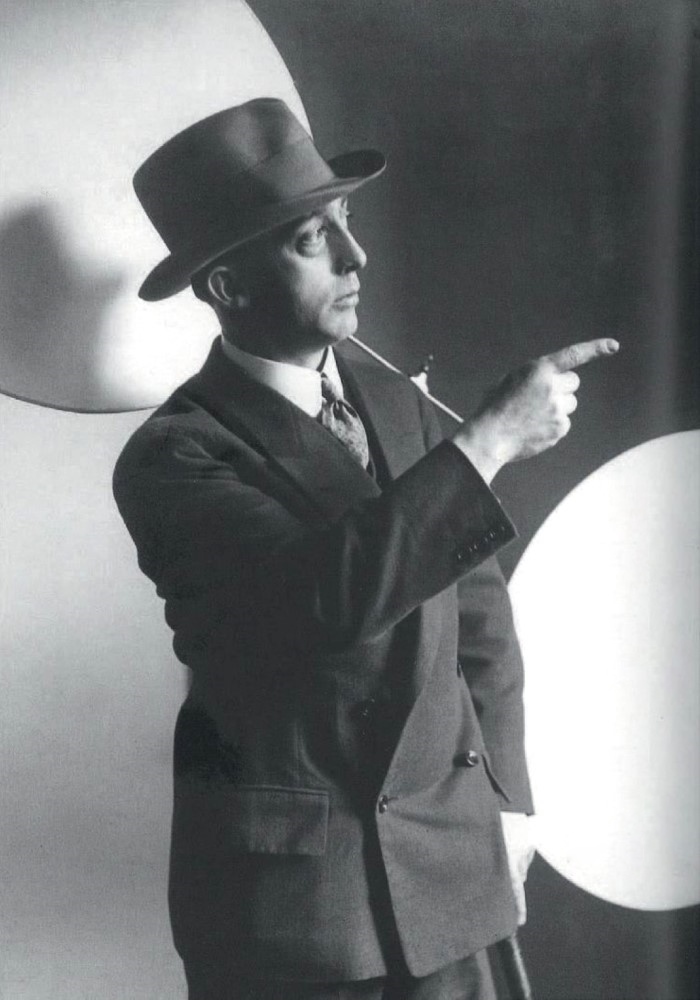Photograph of Belgian avant-garde artist Floris Jespers
Photograph of avant-garde artist Floris Jespers in 1940.
Credit for photograph unknown.
Note!!! – This post is for didactic purposes only!
Is it during a carpet design inspection?
Anyway Floris Jespers also contributed to the revival of monumental art for the universal exhibitions of Paris and New York, and with his carpet projects often stylized with a formalism tending towards art deco.
The difficulties of the 1930’s brought a change to Jespers work.
His boundary-defying modernism softened towards traditional forms of painting, found in particular his series of Flemish and Walloon landscapes. This return to a more discernable subject did not signify a ‘calming down’ of the artist, and the paintings have a real monumentality and are executed in a style clearly influenced by contemporary European movements.
Looking back on this period, Jespers told an interviewer in 1959:
‘I had discovered with the Cubists that a painting must be built. Expressionism then taught me that light and air around an object were not enough; the object itself has essential values: shape, length, width, depth. Thus expression, expression had to be given to the naturalistic form of the object.’
A similar balance of modernist ideals and more traditional values was found in his tapestry designs for the World Exhibitions in Paris and New York of the late ’30s.
Floris JESPERS (1889 – 1965)
Personal note of the gallery – Text: Y. Ysebaert: About Floris Jespers.
In the art circles there is still a lot of controversy about this artist. Some see him as just a follower an epigone of many masters. Well, I can assure you that that is not my opinion at all.
Everything this very talented artist touched was masterly mastered. He was open to his world around him, the new ideas, visions and modern approaches of his time. He was certainly an Avant-gardist. Which artists are now a day not influenced by fashion, hype, buzz, trends and tendencies?
This brings me to Floris cubist period: ” if he is a follower” well than albert Gleizes and Jean Metzinger are too. Pushing this Idea further what do we do with Fernand Léger is he also in that same time period a follower, was he a cubist, even Kahnweiler didn’t figured it out, but he sure wanted Léger in his stable, that says a lot. So they called Léger a ”tubist” Louis Vauxcelles. (From the word tubes). In fact Léger proposed his personal cubism.
In the case of Floris Jespers could we say that sometimes an artist becomes too big for his country, or is the opposite also possible? Is the country in which the artist resides too small that it affects its impact for international recognition? Is there more tolerance for multi movement artists that are French, German or American or exiled themselves to the art center cities of the time? It’s just a thought.
Some would even say or feel that Floris Jespers is too eclectic for them to follow. As if it is now out of fashion to be multi-talented. L’homme de la renaissance or ‘’Homo Universalis’’ is apparently out! Is banalisation in? 🙂
Let’s have a closer look to Floris Jespers African works. If those works are not his style from whose style are they? Who did or which art movement did he follow here? Right!
I think I made my point. Anyway; whatever style Floris used, he puts it to his hand, you can definitely recognize his style, it’s his work, and it’s authentic. #YY
For more information on the artist contact the gallery.
Clic here to see more artworks and bio of JESPERS, Floris >>
Clic here to see more photographs,information, news and bio’s of artists>>
Date:
August 28, 2018
